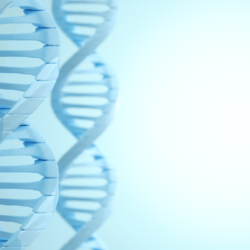You may have heard of the OMAD diet, an acronym for “One Meal A Day”. This diet has gained in popularity because of its tempting promises of weight loss and health benefits. But what do we really know about this diet, and is it as effective as it is claimed to be? Let’s delve into the OMAD diet: everything you always wanted to know.
The OMAD diet recommends eating just one meal a day. This contrasts with the traditional recommendation to eat three meals a day, plus snacks. The OMAD diet is a form of intermittent fasting, where you fast for 23 hours and eat only one meal in a one-hour window.
What are the principles of the OMAD diet?
The OMAD diet, or “One Meal A Day”, is a form of intermittent fasting that has attracted a great deal of interest in recent years. This unconventional diet, which is based on eatingjust one meal a day, requires a thorough understanding of its fundamental principles if it is to be adopted healthily and effectively. Let’s delve into the details to demystify the essential principles of the OMAD diet.
An unconventional approach to eating
When you think of the modern diet, the idea of eating three meals a day seems set in stone. However, the OMAD (One Meal A Day) diet, which advocates eating just one meal a day, defies this established norm. This dietary practice is based on a solid theoretical foundation rooted in human evolution.
Dietary evolution: an anthropological perspective
To understand the principle of the OMAD diet, it is essential to revisit our evolutionary history. Our prehistoric ancestors did not have the luxury of eating at regular times. Instead, they ate intermittently, depending on available resources and hunting success. This irregularity conditioned their metabolism to be able to function efficiently, even in the absence of constant food.
In other words, the human body would be designed to tolerate, and even thrive in, conditions of intermittent fasting. The advent of agriculture and easy access to food overturned these dietary patterns, introducing the concept of three meals a day. The OMAD diet attempts to reintroduce this ancestral approach to eating into modern life by limiting calorie intake to once a day.
Intermittent fasting and the OMAD diet
Intermittent fasting involves alternating between periods of eating and fasting. Of the various variants of intermittent fasting, the OMAD diet is undoubtedly the most radical. It proposes a 23-hour fasting period, followed by a one-hour eating window. This extreme dietary protocol may seem intimidating at first. However, its followers claim that it not only promotes weight loss, but also a range of other health benefits, from improved insulin sensitivity to better mental concentration.
Ultimately, the OMAD diet is a striking example of how unconventional dietary approaches can find a place in our modern world. However, as with any major change in diet, it is advisable to consult a health professional before starting the OMAD diet.
The benefits of the OMAD diet
Despite its restrictive nature, the OMAD diet is credited with a number of potential benefits. These benefits go far beyond simple weight loss. They encompass various aspects of health, including metabolic health, mental well-being and even longevity. Let’s explore these promised benefits of the OMAD diet in detail.
Weight loss
One of the most promising and frequently cited benefits of the OMAD diet is weight loss. By consuming food only once a day, followers of this practice tend to ingest fewer calories than they would if they were eating a standard diet with several meals. This calorie deficit, induced by the diet, can lead to significant weight loss.
Mechanism of weight loss with the OMAD diet
Weight loss is explained by the law of energy: to lose weight, you need to burn more calories than you consume. By limiting calorie intake to a single meal, the OMAD diet naturally makes it easier to establish a calorie deficit. In addition, prolonged fasting for 23 hours can also have a positive effect on the metabolism. In the absence of glucose from food, the body is forced to draw on its fat reserves for energy, which can contribute to weight loss.
Improved insulin sensitivity
Another potential benefit of the OMAD diet, supported by some research, isimproved insulin sensitivity. This could be particularly beneficial for people with type 2 diabetes.
Intermittent fasting and insulin sensitivity
Insulin is a hormone that plays an essential role in regulating glucose levels in the blood. Increased sensitivity to insulin means that your body’s cells are more able to take glucose from the blood, which can help maintain stable blood sugar levels.
Some studies have shown that intermittent fasting, such as the OMAD diet, can improve insulin sensitivity. This may be because fasting gives your body a break from the constant production of insulin that occurs when you eat throughout the day.
Mental well-being and cognitive clarity
Some OMAD dieters report improved mental well-being and cognitive clarity during periods of fasting. This effect could be linked to the production of ketone bodies, molecules produced when the body burns fat for energy, which are known to have beneficial effects on the brain.
Increased longevity
Preliminary research suggests that intermittent fasting may help to prolong longevity. Fasting appears to induce a state of mild stress in cells that may stimulate autophagy, a cellular cleansing process that can help prevent age-related diseases.
The challenges of the OMAD diet
Although the OMAD diet has potential benefits, it is not without its challenges. The transition from a conventional diet to a 23-hour fast can be difficult to manage, both physically and mentally. Let’s take a closer look at these challenges.
Managing hunger
The most obvious challenge of the OMAD diet is managing hunger. Going 23 hours without eating can be difficult, especially in the first few days or weeks. It’s essential to be prepared to manage food cravings and to distinguish between real and psychological hunger.
Adequate nutritional intake
Another major challenge is ensuring that you get adequate nutritional intake from just one meal a day. It can be difficult to get all the nutrients you need from a single meal, and this requires careful meal planning.
Social impact
The OMAD diet can also have a social impact. Meals are often social events, and following a diet that limits food consumption to once a day can make it difficult to take part in meals with family or friends.
Potential side effects
Finally, some people may experience undesirable side effects when they start the OMAD diet, such as headaches, fatigue, dizziness or sleep problems.
The OMAD diet and muscle mass gain: a possible duo?
The OMAD diet, with its limited meal window, raises an interesting question: is it compatible with building muscle mass? After all, building muscle generally requires regular protein intake throughout the day to maximise muscle protein synthesis.
What the science says
According to the research, the answer is not simple. On the one hand, some studies suggest that distributing protein throughout the day may be beneficial for muscle growth. This could suggest that the OMAD diet, with its single meal window, is not optimal for muscle mass gain. However, other research indicates that as long as total protein intake is sufficient, the distribution of protein throughout the day may not be as critical. This means that with a protein-rich meal, the OMAD diet could potentially support muscle growth.
FAQ
Is the OMAD diet safe?
The OMAD diet may be safe for some people, but not for everyone. It is best to consult a health professional before starting.
Is the OMAD diet good for weight loss?
The OMAD diet can help you lose weight by creating a calorie deficit. However, it is crucial to adopt a balanced approach and choose nutritious foods.
Is the OMAD diet suitable for athletes?
The OMAD diet may not be suitable for everyone, particularly those who lead a very active lifestyle or who are athletes. They may need more calories and nutrients than the OMAD diet can provide.
Can the OMAD diet cause health problems?
If you don’t eat a balanced diet, the OMAD diet could lead to nutritional deficiencies. In addition, for some people, it may increase the risk of eating disorders.
Can I drink coffee during the OMAD diet?
Yes, you can drink coffee during the OMAD diet. However, it is recommended that you drink it black or with very little milk or cream so as not to interrupt your fast.
How long does it take to see the results of the OMAD diet?
This depends on a number of factors, including your calorie intake, your level of physical activity and your metabolism. Some people can see results in a few weeks, while for others it may take several months.
Read more:
- Harvard T.H. Chan School of Public Health. “Intermittent Fasting: Surprising Update”
- Johns Hopkins Medicine. “Intermittent Fasting: What is it, and how does it work?”
- American Heart Association. “What is Intermittent Fasting?







